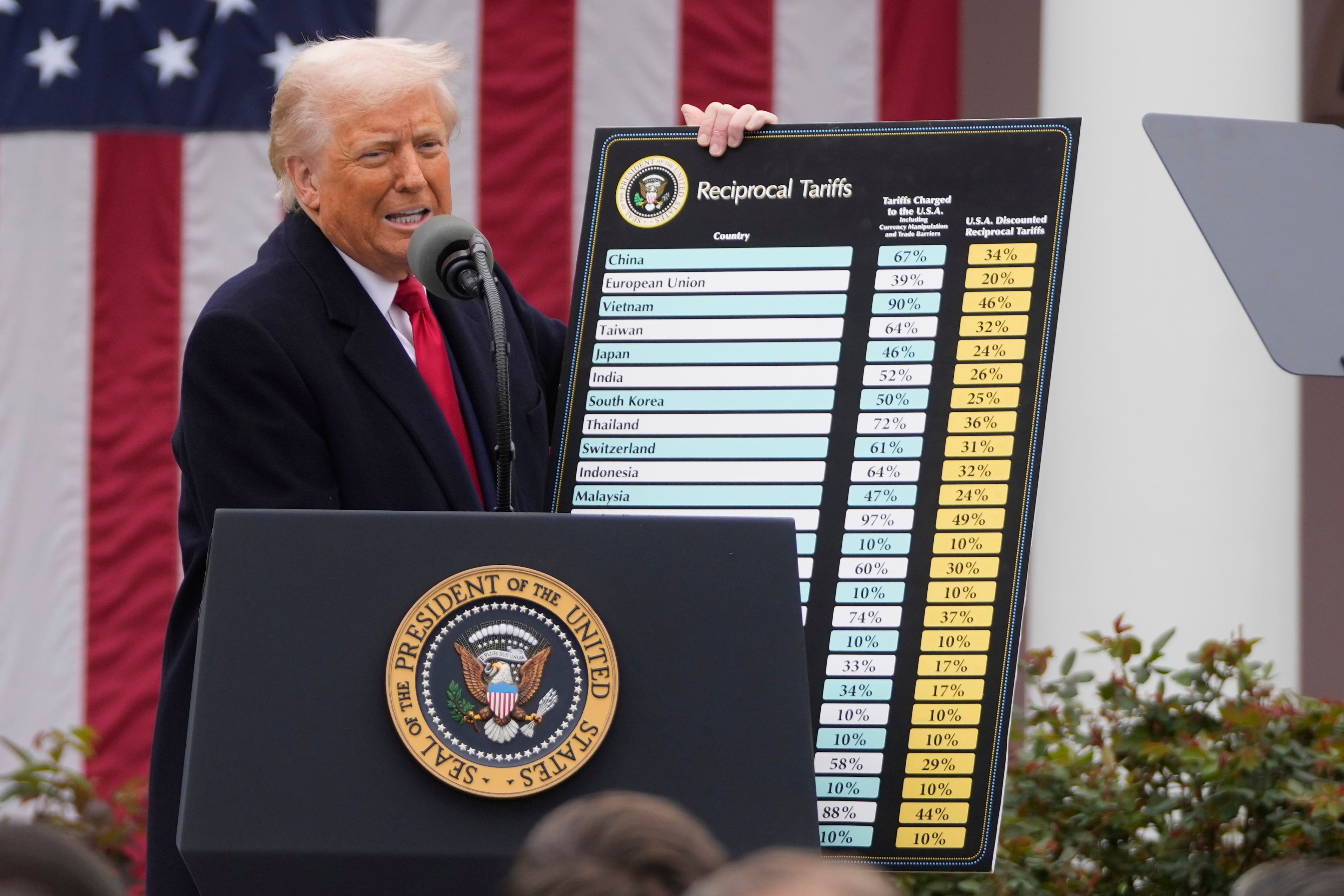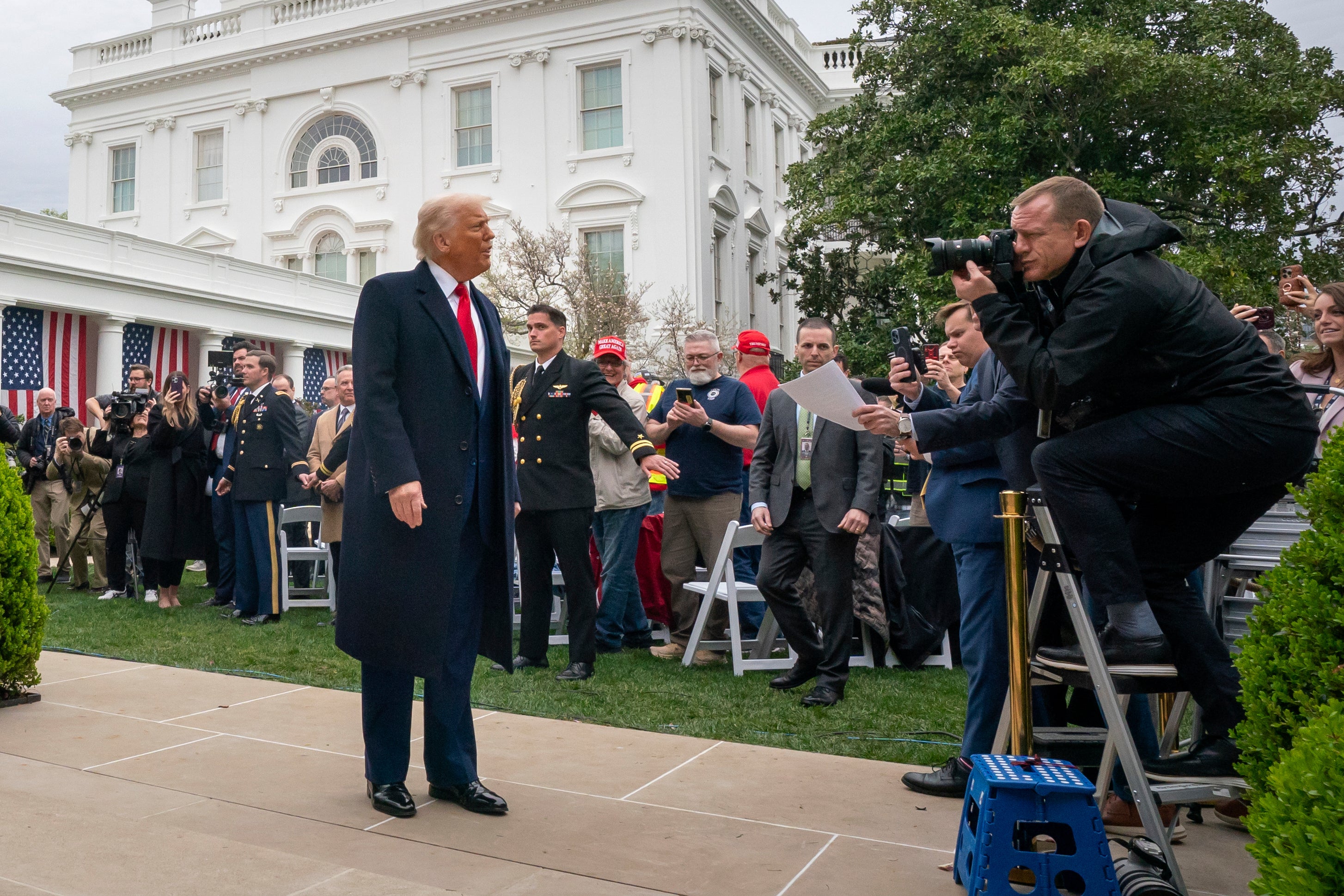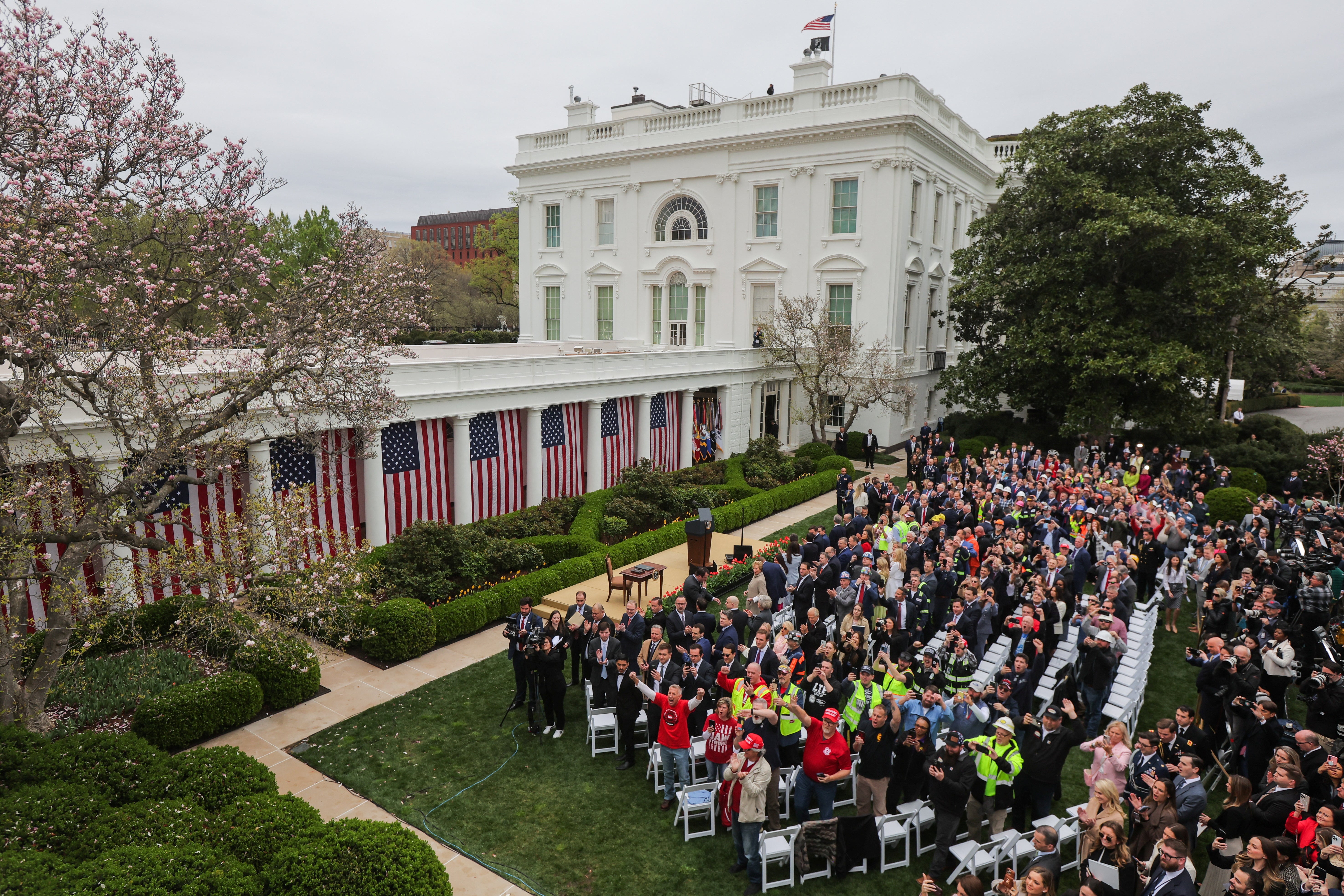List Trump rates in full: each country has hit the “liberation day” – and surprising exemptions

Donald Trump has imposed the most steep American rates on imports in over a century, collecting rates up to 50 % on some countries in a move described by the EU as A “hard blow” for the world economy.
THE US president Wednesday of the shocked global market As the minimum rates of at least 10 % on almost all exporters in the United States, with Much higher rights for countries enjoying the greatest commercial surpluses.
The nations of the South -est Asia and some of the weakest economies in the world have been more affected, aggravating the effects of the cuts of the Trump administration to Usaid program in many of these countries.
Below is reported The Independent ‘The breakdown of the countries has affected the new withdrawals and those that have been exempt harder.
Basic rate of 10%
Numerous countries, including the United Kingdom, will have to face only what the White House has described as the “basal” rate on their imports in the United States of 10 %, entering into force from April 5.

Other countries in this category include Ukrainian, Australia, New Zealand, Singapore, Brazil, Turkey, Colombia, Argentina, El Salvador, United Arab Emirates and Saudi Arabia.
Countries exempt from new rates
The exemptions were limited and mainly linked to existing commercial agreements or special circumstances. Canada was exempt from both the basic line of 10 % and from the mutual rates pursuant to the US-Messic-Canada (USMCA) agreement. However, it remains subject to a separate rate of 25 % on most goods and 10 % on energy exports imposed in February 2025, relating to the issues relating to immigration and drug trafficking, that the White House stated that they could be potentially adequate or replaced by the basic rate later.
Mexico was free from the new rates due to the Usmca, although it faces the same 25 % rate from February 2025, with a possible future alignment to the new picture.
Cuba, Belarus, North Korea and Russia were also not subject to new rates, nor due to existing sanctions or existing high rates. The US sanctions on Moscow already “precludes any significant trade,” the press secretary of the White House Karoline Leavitt told Axios.

The countries have hit the new rates more hard
The following countries face the highest tariff rates pursuant to the so -called “mutual rate” regime of Trump, with the White House that states that this reflected their significant commercial surplus with the United States or high obstacles to American exports. These rates will come into force on April 9th.
- Cambodia: 49% mutual tariff
Cambodia was hit with the highest rate of 49 %. An economy in development in which almost 18 % of the population lives below the poverty threshold, most of its people relies on agriculture, with small scale farmers vulnerable to climate change, to float the prices of crops and disputes on earth.
An important exporter to the United States, Vietnam was hit by a 46 % rate despite having adopted urgent measures to reduce its commercial surplus with Washington in recent weeks, including cutting rates on a wide range of goods intended for the United States. The prepared withdrawal has been imposed since the country has become more and more a conduit for Chinese goods that tried to evade rates, they said US officials. Chinese producers have previously moved their operations to countries such as Vietnam and Cambodia, not only for the lowest operating costs, but also to evade commercial barriers.
Sri Lanka faced the fourth largest rate despite being an important exporter in the world.
Bangladesh, an upper clothing exporter, suffered a serious blow as it was hit with a rate of 37 %. Already in crisis since his leadership was expelled last August, his clothing industry is strongly based on US exports, made up of approximately 7 billion dollars a year.
Thailand faces a 36 % mutual rate pursuant to Trump’s new commercial policy. This aims at its significant commercial surplus and barriers, influencing exports such as electronics and fabrics in the United States.
China, an important rival and commercial partner of the United States, was affected by a mutual rate of 34 %, in Added to a pre -existing rate of 20 % set previously in 2025. With a total rate of 54 %, China promised countermeasures, accusing Mr. Trump of “unilateral bullying“. Analysts say that the rate is even higher in practice for many of the most important Chinese exporters, due to further specific tariffs in the sector as a 25 % duty on cars.

Taiwan was targeted by a semiconductor giant and a significant technological exporter. These rates do not yet apply to semiconductors, probably due to the complexity of the supply chain.
Switzerland was affected by high rates despite its smaller commercial volume. It was probably due to its high rates on US goods such as agricultural products.
IndiaOne of the major commercial partners in Asia was hit by the one that Trump said that it was a “discounted” mutual rate of 26 %. Repeatedly accused India of “very high rates” And the “tariff king” defined it for its average withdrawal on American goods by 52 %.
A great ally from the United States, South Korea has still been targeted for its commercial surplus and barriers. The rates arrive at a vulnerable moment while the country rollers from a political crisis that left it without an elected leader.
Another ally us, JapanHe described the 24 % rate as “extremely deplorable”. Commercial experts said not to expect such a high rate, given that the average Tokyo rate on non -agricultural assets is about 2.4 percent, among the lowest in the world.
Treated as a single entity, the EU was affected by a 20 % rate due to a commercial deficit of $ 235.6 billion with the United States in 2024 and higher rates on American assets.

The list of personalized Trump rates in full
This list was provided by the White House as a document attached after the press conference of Mr. Trump. It does not include countries that are facing the “basal” rate of 10 %.
Algeria 30%
Angola 32%
Bangladesh 37%
Bosnia and Herzegovina 36%
Botswana 38%
Brunei 24%
Cambogia 49%
Cameroon 12%
Chad 13%
China 34%
Ivory coast 21%
Democratic Republic of Congo 11%
Guinea Equatorial 13%
European Union 20%
Falkland Islands 42%
Figi 32%
Guyana 38%
India 27%
Indonesia 32%
Iraq 39%
Israel 17%
Japan 24%
Jordan 20%
Kazakhstan 27%
Laos 48%
Lesotho 50%
Libya 31%
Liechtenstein 37%
Madagascar 47%
Malawi 18%
Malaysia 24%
Mauritius 40%
Moldova 31%
Mozambique 16%
Myanmar (Burma) 45%
Namibia 21%
Nauru 30%
Nicaragua 19%
Nigeria 14%
North Macedonia 33%
Norway 16%
Pakistan 30%
Philippines 18%
Serbia 38%
South Africa 31%
South Korea 26%
Sri Lanka 44%
Switzerland 32%
Syria 41%
Taiwan 32%
Thailand 37%
Tunisia 28%
Vanuatu 23%
Venezuela 15%
Vietnam 46%
Zambia 17%
Zimbabwe 18%




